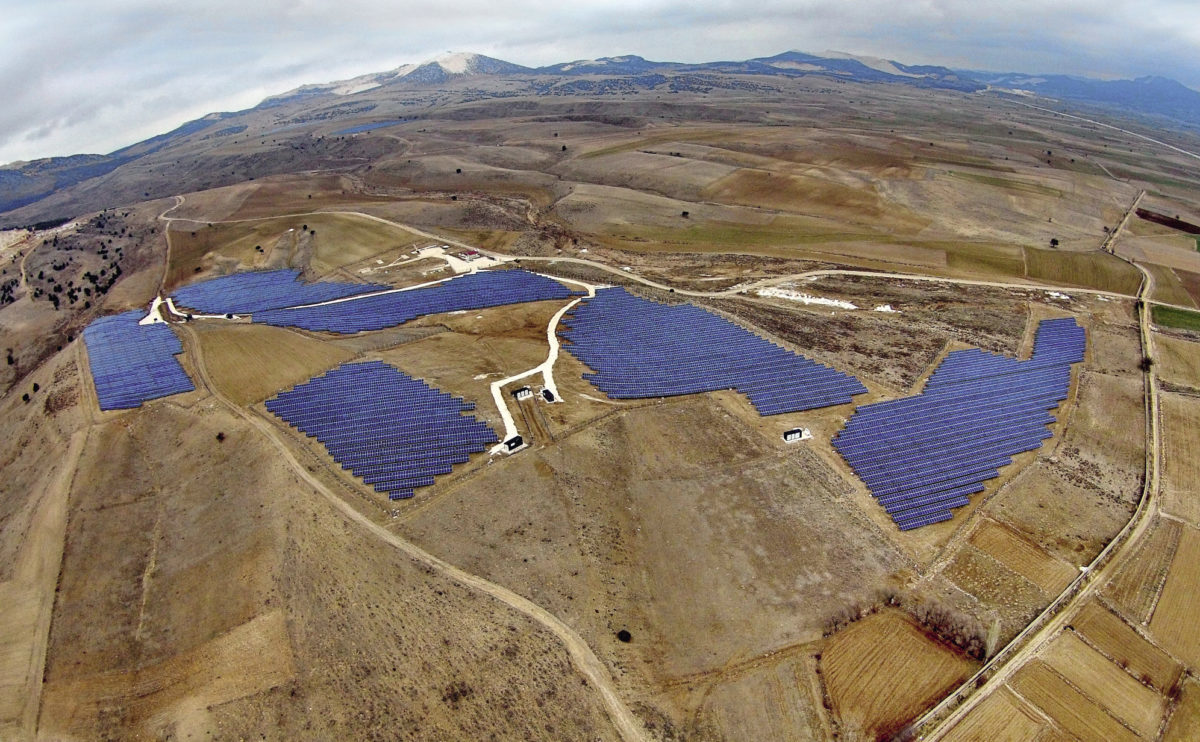A new report published today by Bloomberg New Energy Finance (BNEF) finds that solar PV and onshore wind power were 18% more competitive in 2017 – boosting renewables’ efficacy, affordability and flexibility across a global scale.
With battery storage technology also delivering impressive cost reductions, the holy trinity of PV, wind and storage is serving to loosen fossil fuels’ grip on the global energy mix, the report finds.
According to BNEF, renewables and batteries are posing three distinct threats to the fossil fuel sector, specifically in terms of offering bulk generation, supplying dispatchable generation, and providing grid and energy flexibility – all previously the preserve of fossil fuels such as coal and gas.
A 79% price decrease in lithium-ion batteries since 2010 has had a dramatic impact on how storage technology can now support various parts of the electricity system, most notably in enabling greater penetration on global grids of intermittent power generation sources such as solar and wind, BNEF head of energy economics, Elena Giannakopoulou said.
“The conclusions are chilling for the fossil fuel sector,” she warned. “Some existing coal and gas power stations, with sunk capital costs, will continue to have a role for many years, doing a combination of bulk generation and balancing, as wind and solar penetration increase. But the economic case for building new coal and gas capacity is crumbling, as batteries start to encroach on the flexibility and peaking revenues enjoyed by fossil fuel plants.”
The BNEF calculation places solar’s levelized cost of electricity (LCOE) in the first half of 2018 at $70/MWh (minus tracking systems), which is an 18% cost reduction on last year and ahead of offshore wind (at $118/MWh) but behind onshore wind, which currently stands at an LCOE of $55/Mwh.
These figures are even lower for solar in Chile, India, Australia and Jordan, BNEF found, and costs are falling fast in all growing PV regions around the globe.
Over the past nine years in which BNEF has been tracking LCOE for all energy sources, it has recorded a 77% reduction in the cost of solar PV, compared to “only very modest reductions” for nuclear, coal and gas.
For the energy mix, this means that solar PV is becoming a particularly compelling source of bulk generation as efficiencies of solar modules improve and competitive auctions spread globally. With increased battery storage capabilities in these regions, solar+storage is also proving its worth as a dispatchable power source, smoothing output and shifting the timing of supply in many regions.
“Competitive auctions for new renewable energy capacity have forced developers, equipment providers and financiers to bear down on all the different costs of establishing wind and solar projects,” added BNEF’s head of EMEA, Seb Henbest.
“Thanks to this and to progressively more efficient technology, we are seeing record-low prices being set for wind and solar, and then those records being broken again and again on a regular basis. This is having a powerful effect – it is changing perceptions.”
This content is protected by copyright and may not be reused. If you want to cooperate with us and would like to reuse some of our content, please contact: editors@pv-magazine.com.








By submitting this form you agree to pv magazine using your data for the purposes of publishing your comment.
Your personal data will only be disclosed or otherwise transmitted to third parties for the purposes of spam filtering or if this is necessary for technical maintenance of the website. Any other transfer to third parties will not take place unless this is justified on the basis of applicable data protection regulations or if pv magazine is legally obliged to do so.
You may revoke this consent at any time with effect for the future, in which case your personal data will be deleted immediately. Otherwise, your data will be deleted if pv magazine has processed your request or the purpose of data storage is fulfilled.
Further information on data privacy can be found in our Data Protection Policy.